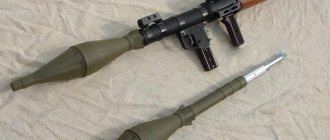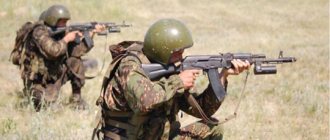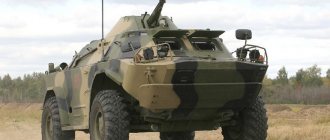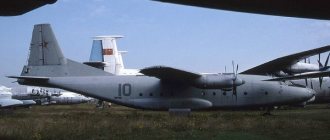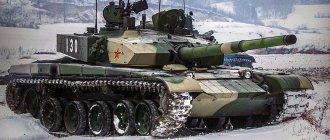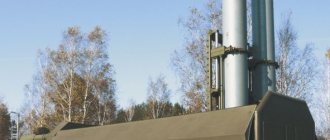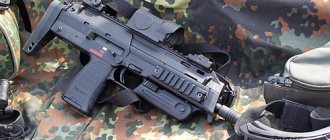| This article lacks links to sources of information. Information must be verifiable, otherwise it may be questioned and deleted. You may edit this article to include links to authoritative sources. This mark was set on August 4, 2020 . |
| ZIL-4104 | ||||||||||||||||||||||||||||||||||||||||
| Total information | ||||||||||||||||||||||||||||||||||||||||
| Manufacturer | ZIL | |||||||||||||||||||||||||||||||||||||||
| Years of production | 1978—1983 | |||||||||||||||||||||||||||||||||||||||
| Assembly | ZIL (Moscow, USSR) | |||||||||||||||||||||||||||||||||||||||
| Class | representative | |||||||||||||||||||||||||||||||||||||||
| Other designations | ZIL-115 | |||||||||||||||||||||||||||||||||||||||
| Design | ||||||||||||||||||||||||||||||||||||||||
| Body type | 4-door limousine (7-seater) | |||||||||||||||||||||||||||||||||||||||
| Layout | front-engine, rear-wheel drive | |||||||||||||||||||||||||||||||||||||||
| Wheel formula | 4 × 2 | |||||||||||||||||||||||||||||||||||||||
| Engine | ||||||||||||||||||||||||||||||||||||||||
| ||||||||||||||||||||||||||||||||||||||||
| Transmission | ||||||||||||||||||||||||||||||||||||||||
| Number of steps | 3 | |||||||||||||||||||||||||||||||||||||||
| Torque converter transformation coefficient | 2,45 | |||||||||||||||||||||||||||||||||||||||
| Gear ratios | ||||||||||||||||||||||||||||||||||||||||
| main gear | 3,62 | |||||||||||||||||||||||||||||||||||||||
| 1st gear | 2,02 | |||||||||||||||||||||||||||||||||||||||
| 2nd gear | 1,42 | |||||||||||||||||||||||||||||||||||||||
| 3rd gear | 1,0 | |||||||||||||||||||||||||||||||||||||||
| Reverse gear | 1,42 | |||||||||||||||||||||||||||||||||||||||
| Control mechanism | floor lever | |||||||||||||||||||||||||||||||||||||||
| Switching | automatic | |||||||||||||||||||||||||||||||||||||||
ZIL-41045 →
Media files on Wikimedia CommonsZIL-4104
- a luxury car with a limousine body, produced by the plant named after.
Likhachev in 1978-1983. Experimental cars and cars of the first production were designated ZIL-115
[1], which was later replaced by ZIL-4104 due to the adoption of a new classification system in the USSR.
In 1983-1985, the ZIL-41045 car was produced, and in 1986-2002 - ZIL-41047. They had only some external differences from the base model; technically, all models in the series were the same.
Historical reference
The ZIL 4104 car was produced for five years. Its creation and production from the factory assembly line was carried out by the plant named after. Likhacheva. The developers assigned the index 115 to the car. However, after some time, due to a change in the classification system in the Union, the elite “iron horse” received the number 4104. All existing modifications of the car based on this titanium were produced until 2002.
What happened next?
Despite the lack of specifics, prototypes continued to be tested at factory sites and improvements were made to the design. In August 1991, due to the difficult situation in the country, it became clear that the project would not receive demand. When the country began to move to a market system, ZiL could independently begin producing a new sedan and limousine. To do this, it was necessary to find financing, and then customers to purchase expensive vehicles, which is practically impossible in a crisis. The project was closed, the limousine was disposed of, and the sedan, after many years of inactivity at the plant, went to the private collection of a Lukoil top manager.
Design nuances
ZIL 4104, the design of which was finalized only in 1977, replaced the 114th model, which in turn had enormous technical potential and could easily work for many more years without problems. But the decision to create a new car was made because there was a change in fashion in the automotive industry itself.
The first project of the 4104 model was released back in 1974, when engineers assembled a model from plasticine. It was based on a forced ZIL 114 engine. They decided to replace the lower camshaft with a pair of upper camshafts. Due to this, the car received a power of 315 horsepower.
The final design was ready by 1977. The radiator grille immediately caught the eye, giving the car elegance, severity and heaviness. Chrome linings were installed on the wheel arches. Special requirements were put forward for the interior, since the top leaders of the state had to travel in the car. The first sea trials were carried out at the beginning of 1978, and already in October the first cars with the index 4104 were assembled at the plant.
ZIL E169A '1964 – experienced ZIL with cabover layout
ZIL E169A '1964 is an experimental car with a cabover layout, conceived as an alternative to the ZIL 130. The ZIL factory specialists were prompted to create a car with a cab over the engine by the success in a similar direction among colleagues from Kutaisi, Gorky and Minsk. The work on E169A was led by the chief designer of the enterprise, Anatoly Kriger.
They decided to equip the promising car with an independent front suspension on torsion bars. The first sample was ready on December 25, 1964. The car was based on ZIL-130 units - engine, transmission, steering elements, pneumatic equipment, instruments, etc. which, as necessary, were adapted to the new design. The useful length of the cargo platform of the cabover E169A is 0.5 meters longer, and the turning radius is 2 meters less than that of the ZIL 130. Thus, the E169A turned out to be more spacious and maneuverable. The all-metal cabin was distinguished by a high level of comfort and good visibility. Moreover, the aerodynamics of the cabin were such that raindrops falling on the windshield were carried upward by the air flow, so even in heavy rain it was possible to move without turning on the windshield wipers.
The steering column was equipped with a universal joint, allowing it to be tilted along with the cabin. On March 31, 1965, the ZIL-E169A was transferred to the truck development bureau of the experimental workshop. After eliminating the detected defects and shortcomings in the transmission and exhaust system, the car was sent for running-in. The car's directional stability, as well as the stabilization of the steered wheels, was exemplary. When maneuvering sharply, the truck obeyed the steering wheel perfectly.
The vehicle confirmed its technical and economic performance in the Caucasus Mountains in 1965, during joint work between ZIL and NAMI in 1965-1966, as well as during road tests in 1965-1967. No one doubted the prospects of the truck. In the future, on its basis it was planned to create truck tractors, including those with sleepers, dump truck chassis, long-wheelbase modifications, etc. However, ironically, it was never possible to organize the release of E169A.
Options
ZIL 4104, the technical characteristics of which are listed below, was a fairly powerful and roomy car. Its main indicators are:
- Length – 6300 mm.
- Width – 2100 mm.
- Height – 1500 mm.
- The wheelbase size is 3880 mm.
- Ground clearance – 170 mm.
- Weight – 3900 kg.
- Engine type: carburetor.
- The volume of the power plant is 7.7 liters.
- Engine power – 315 hp.
- Automatic transmission.
- The maximum possible speed is 190 km/h.
- The car accelerated to 100 km/h in 13 seconds.
- Fuel consumption is 22 liters for every 100 km.
- Fuel tank capacity – 120 l.
Content
- 1. History
- 2 Technical characteristics 2.1 Body
- 2.2 Engine
- 2.3 Transmission
- 2.4 Chassis
- 3.1 ZIL-41041 Sedan
Motor
ZIL 4104, whose engine was powered by gasoline, was equipped with eight cylinders. Their arrangement is V-shaped. At a time when the shaft reached a rotation speed of 4 - 4.6 thousand revolutions per minute, the engine developed a maximum power of 315 horsepower. In order to reduce the overall weight of the car, the cylinder block and their head were made from high-strength aluminum. Each block was equipped with an overhead camshaft. In addition, each cylinder was equipped with a pair of valves with hydraulic clearance compensators.
The engine operates in conjunction with a four-chamber carburetor and two gasoline electric pumps. There are also two oil radiators. One of them is driven by air cooling, and the second by cooling the machine itself. Transistor type ignition system.
Engine 4104
The engine is eight-cylinder V-shaped, with a camber angle of 90°. A-95 gasoline was used as fuel. The ignition system had a redundant emergency circuit, which increased its reliability, and the car also had two powerful batteries. The rear-wheel drive transmission consisted of an automatic three-speed gearbox with a torque converter. The wheels were equipped with sixteen-inch rims and special tires that allowed movement when the wheel was punctured.
photo engine ZIL-4104
Automatic gearbox
This vehicle unit is equipped with hydraulic transformers and has three gears. To change the stage, use a selector switch, which is located between the front seats. The design of the box provides for a mechanical stopper, which in turn allows you to reliably hold the car on a descent. It is deactivated automatically the moment you start moving. An intermediate support separates the two cardan shafts. The rear axle has the form of a continuous stamped-welded beam. The final drive ratio is 3.62. The wheel hubs are mounted on tapered roller bearings.
Suspension features
ZIL 4104 has a welded frame, which consists of stamped side members, as well as cross members. The front suspension is mounted on wishbones and is independent. Smooth and elastic movement of the machine is achieved through the use of torsion bars installed along the frame. Vibrations and vibrations arising from road unevenness are dampened by telescopic shock absorbers. The rear suspension is longitudinal semi-elliptical leaf springs of impressive length. The width of one such sheet is 7.5 cm, thickness - 8 mm. Polyethylene gaskets are inserted between the sheets to reduce oscillations and vibrations when driving on uneven underlying surfaces. The springs are also complemented by reaction bars. The wheels are equipped with deep rims. The connection to the hubs occurs using C-studs. Tires are tubeless.
As for the steering mechanism, it consists of two main components:
- Screws and nuts with circulating balls.
- Racks with toothed segment.
Brake system
The car's brakes are disc mechanisms installed on all existing wheels. The system is equipped with a hydraulic drive. The gaps are adjusted automatically. There is also an internal cooling system consisting of two circuits, each of which directly affects all wheels. In addition, each circuit is equipped with a vacuum booster. Such a unit is located on the master cylinder of the parking brake - this is already a drum mechanism on the rear wheels. It is activated by pressing the pedal. When the vehicle starts to move, the parking brake stops working.
Electrical equipment
All electrical components of the vehicle are powered by a 12-volt system. It operates thanks to a generator generating power of 1.15 kW and a pair of batteries with a capacity of 120 Ah each. To ensure optimal illumination of the roadway at night or in bad weather, the fog and headlights are equipped with halogen lamps.
Notes[ | ]
- Domestic passenger cars, 2009.
- Vladimir Vinnik.
Practice of party limousine production (ZIL-115) (Russian). RETRO CAR MUSEUM (July 22, 2009). Retrieved October 22, 2012. Archived November 5, 2012. - ZIL-41041 sedan (Russian). JSC “Plant named after I.A. Likhachev." Retrieved October 22, 2012. Archived November 5, 2012.
- ZIL 41041 (1986 – 2000) (Russian). Retro cars (November 26th, 2009). Retrieved October 22, 2012. Archived November 5, 2012.
- Autoreview No. 20, 2012.
- The main car of the Victory Parade
- Military, but peaceful: all ceremonial cars of the USSR and Russia
- Secrets of the development of “Putin’s” Aurus limousine: which cars will be shown at the parade
- Convertibles, which have opened parades in Moscow for the last 9 years, were brought to St. Petersburg
- ↑ 12
Billions - for the Cortege Archived copy from July 12, 2014 on the Wayback Machine - ↑ 12
The Last Parade Archived February 28, 2014 on the Wayback Machine - ZIL-41047, 2010, p. 15.
- Alexey Khresin.
Black Doctor (Russian) (inaccessible link). MOTOR/MOTOR (April 1997). Retrieved October 22, 2012. Archived January 8, 2014. - ZIL-41072 “Scorpion” (Russian). Retro cars. Retrieved October 22, 2012. Archived November 5, 2012.
Options
In what versions was the ZIL 4104 produced? There were few modifications to the car, but they are worth considering in more detail.
Based on elite limousines by specialists from the plant named after. Likhachev developed the following options.
Sedan 41041
A shortened version of the car was released in 1985. It was designed to carry five people and had a sedan body type. The wheelbase has become shortened and has a size of 3.3 meters. This ultimately led to an overall reduction in vehicle weight to 3.2 tons. Oddly enough, the production of this modification was not officially completed, but the last such machine rolled off the assembly line back in the late 1990s. Then the customer was the Moscow City Hall. In total, for the period 1986–2000. 26 of these vehicles were produced.
"Black Doctor" (41042)
The main combat mission of this vehicle was to transport a high-ranking official to a hospital in cases where he had health problems. As you can easily guess from the name, the color of the car was black. It is curious that the doctors in it were forbidden to wear white coats. And in general, the car should not have stood out from the entire motorcade. There was no resuscitation equipment in the cabin. The vehicle itself was developed in parallel with the classic ZIL 4104.
In general, the car was designed for a driver, one security guard, a lying person and three doctors. The body of this station wagon turned out to be slightly longer than that of a limousine. There was also a superstructure in which doctors could conveniently provide first aid if necessary. In some examples, the rear door had two sections: one opened downwards, and the second opened upwards. This car also had a single-section door that tilted up. The interior decoration was so luxurious that even the stretchers were made exclusively from genuine leather.
"Eyes and Ears"
41043 is a model designed for organizing special communications. Therefore, the elite automobile board was equipped with a shielded electrical equipment system, a parabolic antenna for government communications.
Phaeton 41044
In 1981, the plant's engineers produced a version of the car, which was to be used exclusively for parades on Red Square. The vehicle was equipped with a modern folding roof system. This process took 20 seconds. The wheelbase has also undergone changes and has been shortened by 58 centimeters. One driver's seat and two doors were left. And instead of a seat for the passenger, a stand with a handrail was installed, on which high-ranking officials stood during the celebration. Only 3 of these machines were assembled.
This modification took part in parades until 2009. Two vehicles were used, one of which was ridden by the Minister of Defense, and the second by the parade leader. The third copy was a backup and was to be used in the event of a breakdown of one of the first two. To date, all “Phaetons” are maintained in good condition and are included in the balance sheet of the Ministry of Defense of the Russian Federation.
41045
The modification is made in the form of a classic limousine with some changes in appearance. The issue started in 1983 after the new Secretary General came to power and continued until 1985. The wheel arches lost their lining, and the moldings were moved from the sills to the doors. The design of the radiator grille has also been updated, and the front and rear headlights have undergone changes. However, in general, the concept of the car was preserved in the style of the ZIL 4104.
41046
A modernized version of the vehicle for special communications. “Caucasus” equipment was installed, which was ahead of all previous generations in its technical performance. By the way, it is still used today.
41047
After the change of government in 1985, there were changes in the configuration of the car. The headlights began to be made rectangular, the design of the radiator grille changed again, and turn signals were installed on the end surface of the wings. The front doors and rotating windows have also been lost. The rear-view mirrors were fixed in a new housing and their installation location was changed: previously they were on the door, and now on the corner of the window. In order to optimize the environmental standard of the machine, the motor has also undergone changes, which received a contactless start mechanism. In 1988, the transmission was also modernized, which improved its performance and increased its service life.
The wheels are 16 inches in size. The “Granite” function made it possible for the car to continue moving even if the wheels were depressurized. Tests showed that the tires withstood seven bullet hits. At the time of its release, the car was the longest on the planet. The last such elite limousine was produced in 2002 for the head of Kazakhstan. By the way, 41047 turned out to be the last domestically produced car, since after the collapse of the Union the country's top leadership switched to foreign cars.
"Armored capsule" 4105
The design of the vehicle was based on an armored capsule. Cars with an increased degree of protection were produced on the basis of models 4104, 41045, 41047. Assembly was carried out in the city of Kurgan. The plant received an order for 25 vehicles, 2 of which were used during fire tests. The thickness of the body armor in some places reached 10 mm. Glass was produced with increased thickness. Gas tanks received the property of self-tightening in the event of a breakdown and were not subject to self-ignition. This modification was produced in an amount of 14 pieces.
41072
In 1989, a car called “Scorpio” saw the light of day. The car was used to transport the guards of senior members of the country's leadership. The salon is equipped with convenient handrails for successful firing from the windows. There was also a sunroof available. The chair rotated in the desired direction. The rear window opened instantly if necessary. 8 such machines were produced.
Limousine interior
The arrangement and finishing of the interior are traditionally considered one of the most important points when developing a luxury car. When compared with previous models, the limousine has remained virtually unchanged in terms of aesthetics and interior equipment. The interior layout was seven-seater, with three rows of seats: the middle row was formed by strap-on seats, which were retracted into a partition between the VIP salon and the front seats. The adjustable steering column could tilt up, making the driver's position much easier. The rear sofa was equipped with electric drives, which made it possible to adjust the angle of the backrest and the position of each chair. The front seats were upholstered entirely in leather, while the rear seats were upholstered in plush or velor.
The interior decoration of the ZIL-41047 used inserts made of natural walnut wood, and, somewhat less frequently, mahogany. Climate control units were responsible for the climate in the cabin, one each for the passenger and driver compartments. Dethermal three-layer stacks also helped maintain optimal temperature conditions: Belgian glass was installed on the first limousine models, and domestic glass was installed on subsequent models. The interior lighting was individual due to ceiling and corner lamps. The lower part of the door armrests was equipped with special lamps that lit up when the doors were opened.
Control elements for the electric drives of the bulkhead and window lifters were located on the upper surface of the rear door armrests. The rear doors were opened by both passengers and the driver from the straps. Control keys for the audio system and air conditioning are mounted in the right armrest. Special communication devices are located in the walls of the body above the armrests. The central locking and power windows can be controlled from the driver's seat. The central console of the ZIL-41047 car is equipped with air conditioning control units, a loudspeaker, an alarm system and a standard audio system. The box for special communications devices was located between the front seats.
The speedometer and tachometer are located in round wells and covered with cone-shaped glass, which completely eliminates glare.
